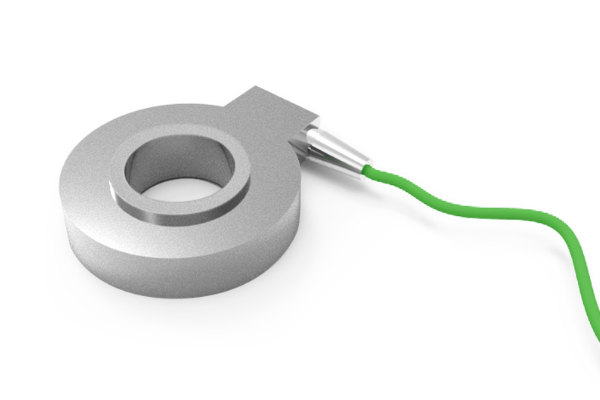Strain Gauge Load Cells are ideally suited for measuring loads in rock bolts, cable anchors and tendons, structural beams, piles, loads between tunnel supports and loads in pull-out tests on trial anchors.
Strain Gauge Load Cells measure compressive and tensile loads in rock bolts, cable anchors and tendons.
They consist of a Stainless Steel cylindrical housing with up to 16 resistance strain gauges in a Wheatstone Bridge configuration. When the cell is subjected to load, the strain gauges change their resistance value; the resulting output signal is directly proportional to the applied load.
The electric anchor load cell is connected to a sheathed cable which is itself connected either directly to a readout unit, or via a switched terminal unit. Load cells can also be wired directly to data loggers for remote monitoring.
Load cells are manufactured with a centre hole to accommodate rockbolts, tendons or anchor cables, but can be supplied with top and bottom load plates for use as a solid centre cell.
Product Features
- Accurate and robust with very good long-term stability
- Fast response time
- Suitable for measurement, remote reading and datalogging
- Connecting cable is strong, screened and flexible
- Negligible temperature effects compared to hydraulic load cells
Product Benefits
- Option for dynamic monitoring
- Effects of uneven and eccentric loads are minimised
- Corrosion-resistant
Operation
A bearing plate is placed beneath the load cell to spread the load and take up any residual non-alignment. A further bearing plate is placed between the cell and the anchor bolt or tensioning device.
Each sensor is connected from the load cell either directly to a readout unit, or via a switched terminal unit. Load cells can also be wired directly to data loggers for remote monitoring.
Configuration of up to sixteen strain gauges within the load cell produces an average load output signal from the cell. Readings can be displayed in engineering units.
Application
Strain Gauge Load Cells can be used to measure general or specific loads.
Typical applications include:
- Rock bolts
- Tensions in cable anchors and tendons
- Structural beams
- Piles
- Between tunnel supports
- Proof of loading and pull-out tests on trial anchors
- Measuring loads during pile testing
- Monitoring loads in arch tunnel supports
- Monitoring longterm loads in concrete dams
Geomotion offer installation and monitoring services to support this system. For more information please email info@geomotion.com.au or contact any of our locations.
